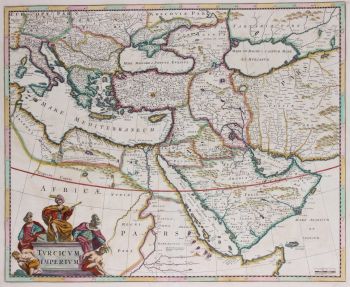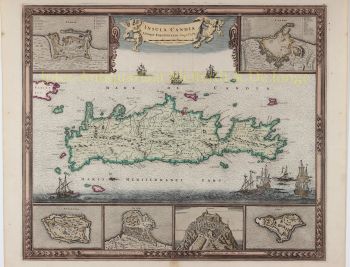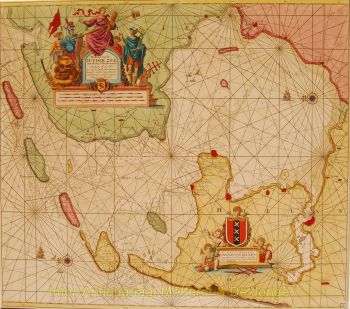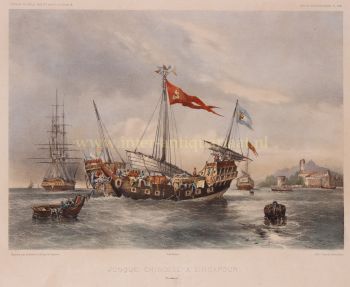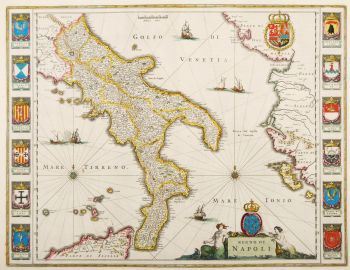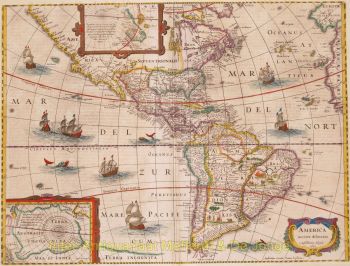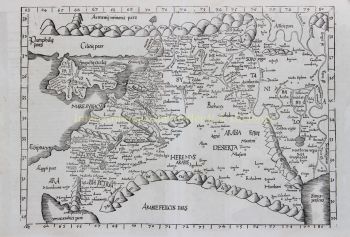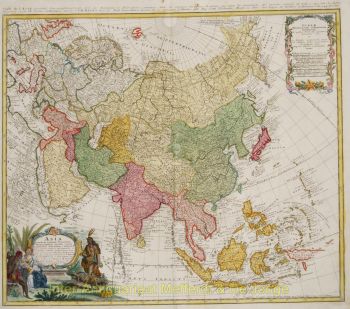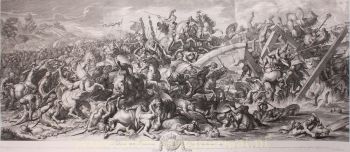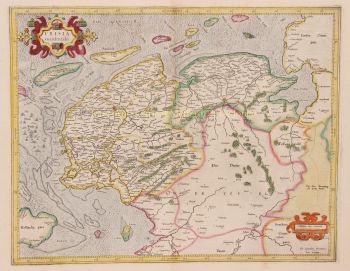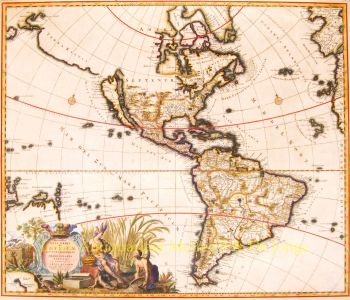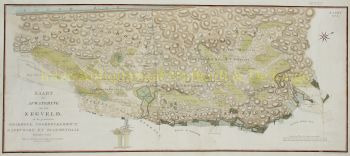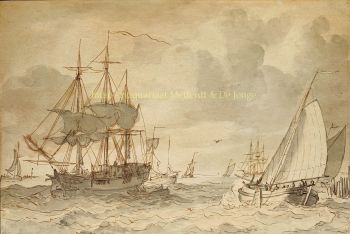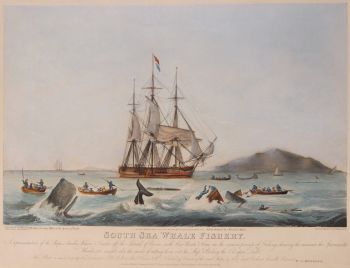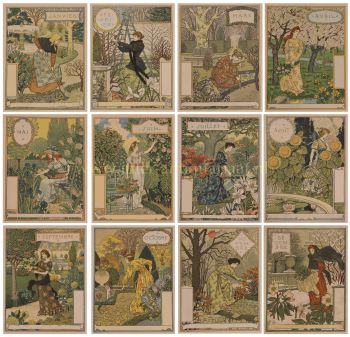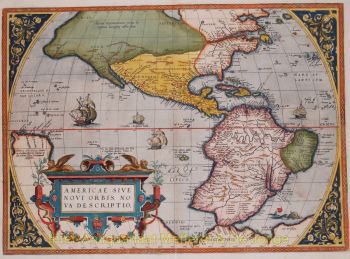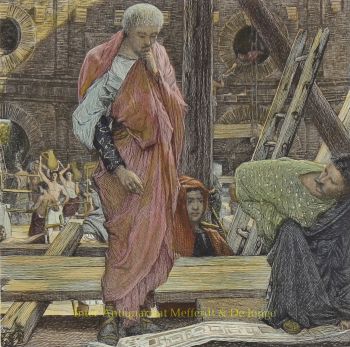Asia 1670
Frederick de Wit
€ 575
Inter-Antiquariaat Mefferdt & De Jonge
- A proposito di opere d'arteNICE EXAMPLE OF DE WIT'S MAP OF ASIA "Accuratissima totius Asiae Tabula in Omnes Partes divisa, de novo Correcta " [Newly corrected, very accurate map of Asia, divided in all parts], copper engraving published approx. 1670 by Frederic de Wit of Amsterdam. Coloured by a later (?) hand. Size: 49 x 58 cm. The extent of European knowledge of the region is depicted with good detail throughout the south and south east, based on the surveys of the Dutch East India Company, while northern and central Asia is filled mostly with mountains and forests and shows the coastline of Yedso [the island of Hokkaido] above Japan. The work of the Jesuit missionaries is reflected in the well-documented region of China. In the lower right corner there is the northern part of Hollandia Nova (Australia) and a hint of New Guinea. The large title cartouche shows a busy scene with traders and their cargo. The copper plate of Frederick de Wit's map was used by the Danckerts publishing family for a reprint a few years later. Price: Euro 575,-
- A proposito di opere artistaFrederik de Wit è nato Frederik Hendriksz. Nacque da una famiglia protestante intorno al 1629 a Gouda, una piccola città nella provincia dell'Olanda, una delle sette province unite dei Paesi Bassi. Suo padre Hendrik Fredericsz (1608 – 29 luglio 1668) era un hechtmaecker (fabbricante di manici di coltelli) di Amsterdam, e sua madre Neeltij Joosten (morta prima del 1658) era figlia di un mercante di Gouda. Frederik si sposò il 29 agosto 1661 con Maria van der Way (1632-1711), figlia di un ricco mercante cattolico di Amsterdam. Dal 1648 circa fino alla sua morte, avvenuta alla fine di luglio 1706, De Wit visse e lavorò ad Amsterdam. Frederik e Maria ebbero sette figli, ma solo un Franciscus Xaverius (1666–1727) sopravvisse loro. Nel 1648, durante il culmine dell'età dell'oro olandese, De Wit si era trasferito da Gouda ad Amsterdam. Comegià nel 1654 aveva aperto una tipografia e un negozio con il nome "De Drie Crabben" (i tre granchi) che era anche il nome della sua casa sulla Kalverstraat. Nel 1655, De Wit cambiò il nome del suo negozio in "Witte Pascaert" (la Carta Bianca). Sotto questo nome De Wit e la sua azienda divennero noti a livello internazionale.
Sei interessato ad acquistare questa opera d'arte?
Artwork details
Categoria
Related artworks
- 1 - 4 / 4
- 1 - 4 / 24
- 1 - 4 / 12


